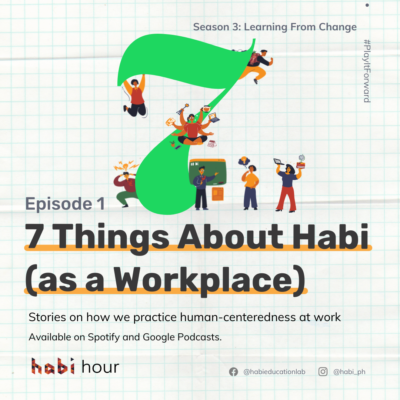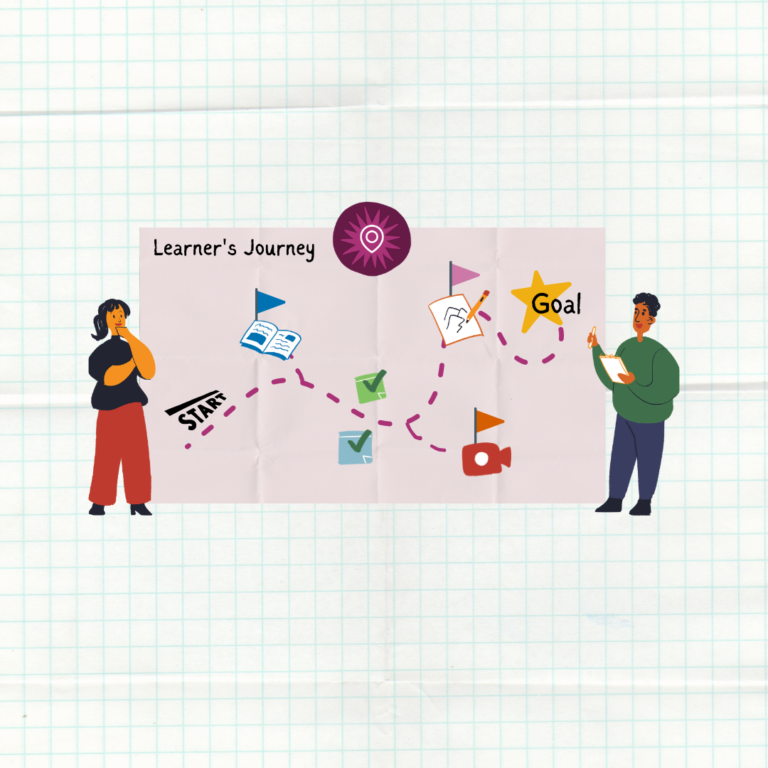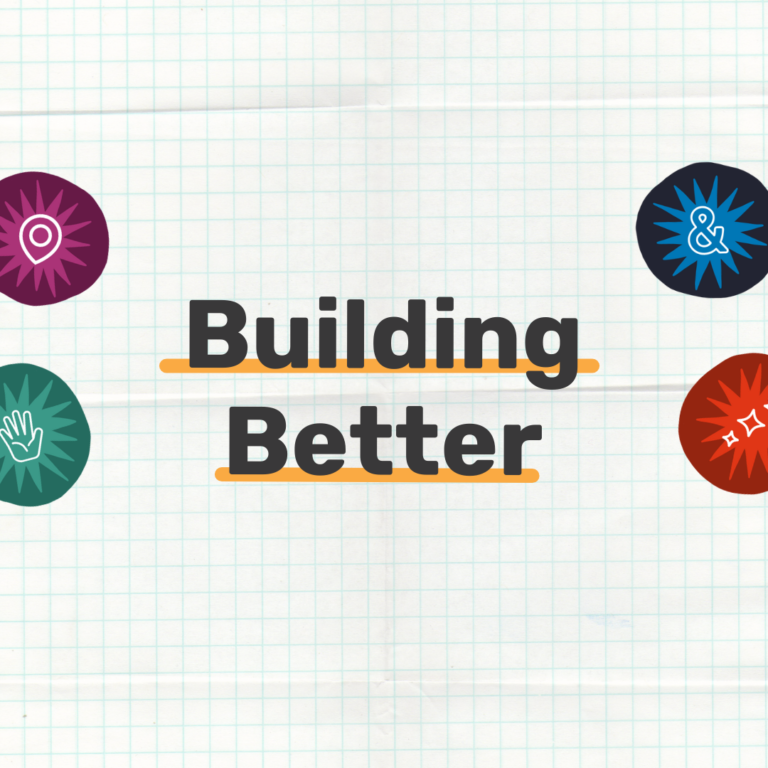Stories of how we practice human-centeredness at work.

Overview
3 December 2021 | 13 min and 45s
In the first episode of Habi Hour Season 3: Learning From Change, we asked LXDs what makes Habi unique as a workplace. Listen to our stories of practicing human-centeredness at work.
Transcript
Introductions
Maia (voice over): What’s your idea of a workplace like?
Chess: It’s very traditional. ‘Yung may desk kayo, kan’ya-kan’yang cubicle, may bundy clock, tapos time in time out, tapos 9 to 5 na work period.
Amiel: Just an office or a place where you do the job.
Jovi: ’Yung interactions din very typical—may boss or head that gives directions to the employees who then executes their tasks, they work 9 to 5, or minsan overtime kapag may hinahabol na deadline.
MUSIC: Habi Hour Intro
Maia (voice over): In this first episode of our Learning from Change series, let’s talk about changes in workplaces. Like Chess, Amiel, and Jovi, most of us come from or have been in very traditional workplaces that follow a certain mold. Individual workstations, rigid time in and time out, bosses and managers. But since joining Habi, we all had to embrace significant changes in a very different kind of workplace. Curious yet?
I’m Maia, an LXD from Habi. And since it’s our 7th year, here are 7 Things About Working in Habi.
#1 Owning our Ways of Working
Maia (voice over): We asked Habi LXDs, “What’s the most unique thing about Habi as a workplace?” Let’s start with Fun Fact 1: We own the way we work.
Amiel: You don’t have your own workstation or workspace. Maliit lang ’yung space or ’yung office ng Habi. Since wala kang workstation, everyday, puwede kang maglipat-lipat kung saan mo gusto or kung saan mo feel na mag-work. Kumbaga wala kang ino-own na space. Puwede mong libutin ’yung bawat sulok ng espasyo ng office namin. And I think unique ’yun sa Habi na feel na parang nasa bahay ka lang din and wala ’yung vibe ng nasa office ka.
Chess: Very flexible pagdating sa work hours. May freedom ’yung employees on when they work: puwede sa umaga, sa gabi puwede sa weekend. It’s really up to you basta ma-communicate sa team. Tapos ’yung isa pa is, ’yung communication is very fluid. Puwede kang makipag-communicate across the organization easily whether gusto mong makausap ’yung directors or makausap yung teammates mo. Sobrang transparent na communication lines, atsaka pati ’yung access to information.
#2 Embracing a Prototyping Mindset
Maia (voice over): Fun Fact 2: We embrace testing early, so we can fail early, and improve early.
Kaye: I don’t think I’ve ever worked in a place that encourages play and experimentation in the way that Habi does. Before working at habi I worked in workplaces where there was a certain amount of pressure to get things right on your first try but here in Habi, we are encouraged to prototype, and prototyping is so built into our systems that there is an understanding that we might not get things right immediately, and that’s okay. If you don’t get it right now, we can always go back and fix it and make it better, and that alleviated a lot of the anxiety I had about the things that I made.
Jovi: I think as a perfectionist, the idea of being open to the possibility of iteration and pivoting as part of an outcome was a big basag moment for me in Habi. I used to to have this “perfect planning, perfect execution” mentality and nagiging sobrang stressful for me when things or events do not fully align with how I envisioned them, but I learned to embrace working with and around uncertainty a lot more through my work in Habi.
Chess: Isang skill na I really didn’t know before is prototyping. So prior din to Habi, sanay ako na dapat ’yung outputs, 90% ayos na, pulido na. Tapos n’ung pagpasok ko sa Habi, sobrang nabasag ’yun ng prototyping mindset, na sometimes as designers, better to design our way forward by prototyping kaysa we wait for the end na mayroon na tayo final product, hindi pa natin na ta-try or napo-prototype.
#3 Valuing Collective and Shared Experiences
Maia (voice over): Fun Fact 3: We value collective and shared experiences.
Celina: Sa Loob for example, we can tell you that every Monday, we start the week, blocked ’yun, 9:30 am, we are all together kahit anong mangyari. Everyone is in the same huddle to stay connected, to be updated. Kahit wala ka sa project ng isang tao, you still bother to listen because it doesn’t mean you won’t learn from it. Kahit wala ka d’on, maraming-marami kang matututunan.
And at the end of every month, we also have the Huddulo which is the huddle sa dulo ng buwan where it’s more reflective. It’s a little longer. And then what we do there is really think about the entire month. “Okay, what did we learn? How did we feel? What are the patterns that we are observing in our team?” So those are some of the rocks, shared experiences we try to block off. On a weekly basis, we do have that, Mondays. And at the end of the month, we have another one.
Celina: Something I personally value also as an LXD. We have these rocks where monthly, mayr’on kaming tinatawag na Balik-Tanaw. What happens is parang nagte-TED talk yung mga team mates namin. Magvo-volunteer sila so like 4 team members at a time talking about a project that just closed and what we learned from that project. And imagine, even storytelling, it’s an LX that LXDs like us can learn from. Learning from the successes and the failures of others, parang it makes us, it helps us with upskilling also.
#4 Inclusivity
Maia (voice over): Fun Fact 4: Everyone’s voice is included.
Celina: Another thing is governance evolution. So acknowledging that everything we’re doing is, you know, we’re prototyping our way forward. So every Huddulo, there’s this segment where Gerson goes, para siyang, ano ’yun, huwes ba yung tawag? Para siyang judge. “Okay, what are your proposals?” gan’yan. And then everyone, literally everyone, can propose something and we’ll discuss it as a team. Kunwari, “Nobody wants to work on a Friday?” Mga ganyan, you can propose that. Radical ideas! I’m not saying that we don’t work on Fridays. You can propose any radical ideas because it’s always up for conversation and discussion. And that’s how we make sure that everyone’s opinions are valued also when it comes to our ways of working. Papadaanin natin ’yan then get consensus!
Jovi: Everyone in Habi has shared responsibility towards Habi as a workplace and organization, everyone is a stakeholder, and the benefits we get to enjoy is also something that we directly work for and towards. You can only get as much out of it from how much you put in.
#5 Valuing Diversity and Being Multidisciplinary
Maia (voice over): Fun Fact 5: We value diversity and having multidisciplinary backgrounds.
Celina: Yeah, there’s only 13 of us on the team. And you know that we do work on a lot of education projects. Maybe it’s still the biggest branch of practice that we have, but it’s not exclusive to education. Pero in terms of learning, education, who has education background, mas kaunti kaming may education background. And something for us to celebrate actually. In that way, teachers like me—teacher talaga ako, educ talaga ang background ko—teachers like us get to open up our minds and our perspectives to all these different disciplines.
Chess: ’Yung pagiging multidisciplinary of Habi Education Lab as an org has really helped us design very rich and flavorful learning experiences. Iba-iba yung ambag tsaka iba iba yung baon ng LXDs na expertise that we are able to put into the table. Ako personally, ’yung background ko is in public administration, and you might think it’s very far from the creative fields and design. Pero we are able to bring what I’ve learned from that field into designing. For example, having very structured systems. So nakakatulong ’yung ganoon kong design lens and sensibilities when it comes to creating very clear instructions or very clear systems. Being multidisciplinary is a strength of the organization.
#6 Knowing our Strengths
Maia (voice over): Fun Fact 6: We know our strengths and work with our strengths.
Kaye: So ironically, one of my top strengths has to do with spotting and anticipating problems. So it can be challenging to start with strengths first. But it’s a good challenge and it makes people feel seen in a way that makes them feel good about themselves. And I think that since using a more strengths-based approach, I’ve become more intentional about my interactions with people. I ask which talent they need at this moment so I can activate that and put on hold something that might not be helpful at this time. And I also look at my team’s talents to adjust my own ways of working so that everybody on the team feels like they can bring their best selves to work.
#7 Human-centeredness
Maia (voice over): If we piece everything that we have covered so far, from point 1 to point 6, there is a clear common denominator: Habi’s mission of making well-designed learning experiences starts at home. All the systems, structures, and processes within the organization put each LXD in the center so that learning can happen fast and freely. In unlocking the potential of each member of Habi, we are able to unlock the potential of the entire organization. This is the final thing about Habi: we practice human-centeredness as a workplace.
We nurture learning inside the organization so that we can make well designed experiences for those we are serving outside our organization.
Celina: So there’s working on projects, but maybe on a macro level, there’s working on ourselves and on Habi. So we also have these different core roles that we hold. And maybe funny ’yung ibang titles dito, and you’re like, “What’s Moana? What’s Merlin?” But also because part of our team values din ’yan, ’yung having that fun and delight in everything.
But these core roles, what they do is that they make sure that we have these different tools, processes, services, templates, to enable LXDs to make well-designed learning experiences.
Jovi: The most unique thing about Habi is I think that as a workplace we are very deliberate about how we view and treat our work. We treat work not as a monolithic part of our adult lives: it’s not just a job that pays the bills but it’s another space for us to embody the things we believe in, and yung intention na iyon translates into our ways of working, yung culture natin, what we try to advocate for and how we operationalize our mission of creating a CISH society. Ibang iba yung bottomline natin at least when I compare it to my more corporate work experience. Medyo privilege and blessing to be in Habi to be honest, but what’s beautiful din is that we also want this idea to spread to everyone we work with so that their workplace could also be more human-centered.
Synthesis
Maia (voice over): That wraps up the 7 things about what it’s like to work with, for and in Habi.
How about you? What’s unique about your workplace? What makes it feel human? How else can we make it feel human?
MUSIC: Habi Hour Outro


